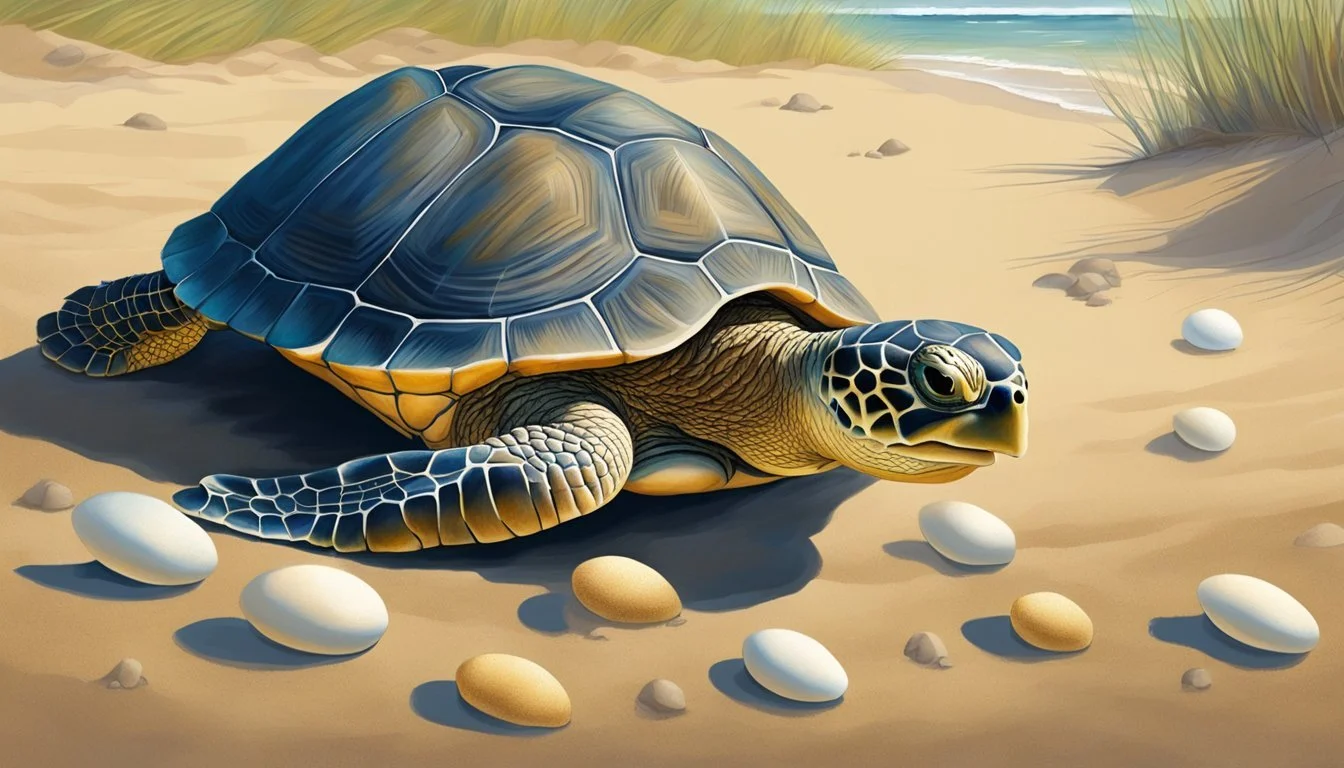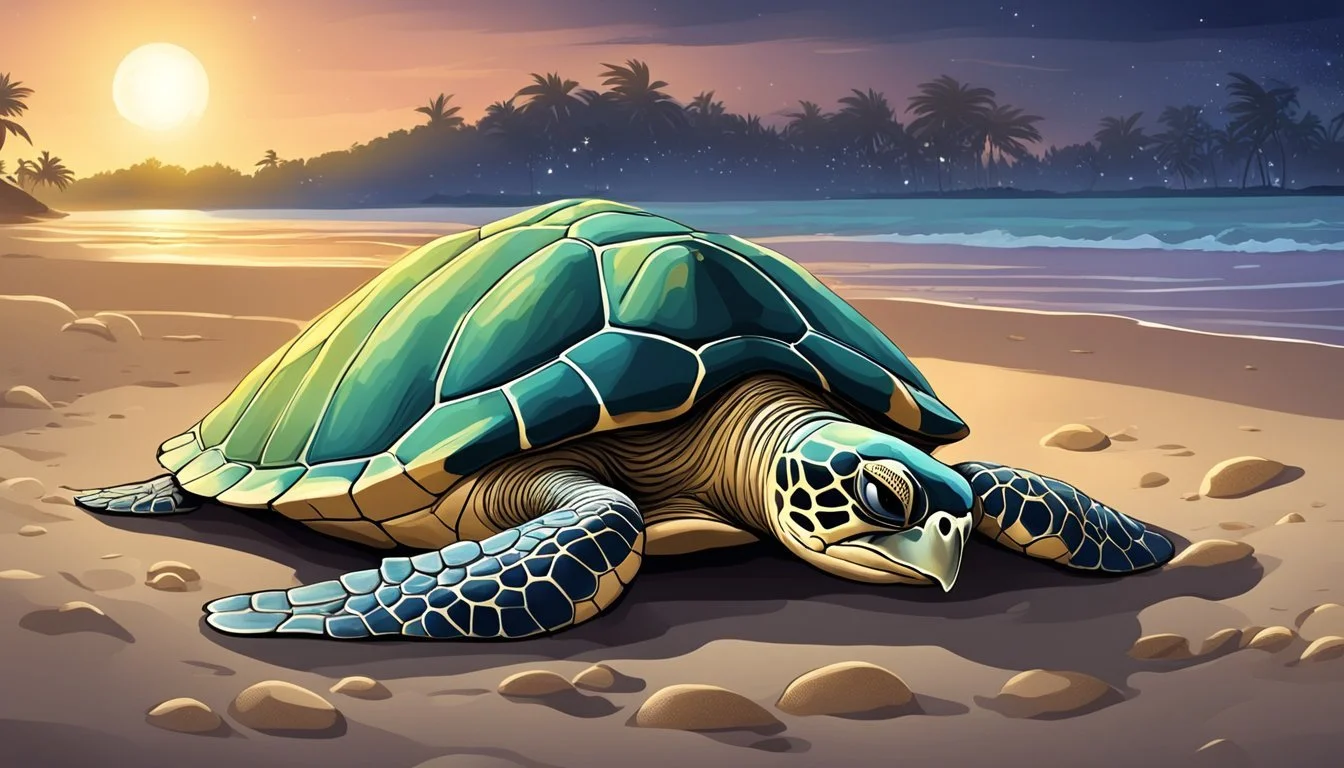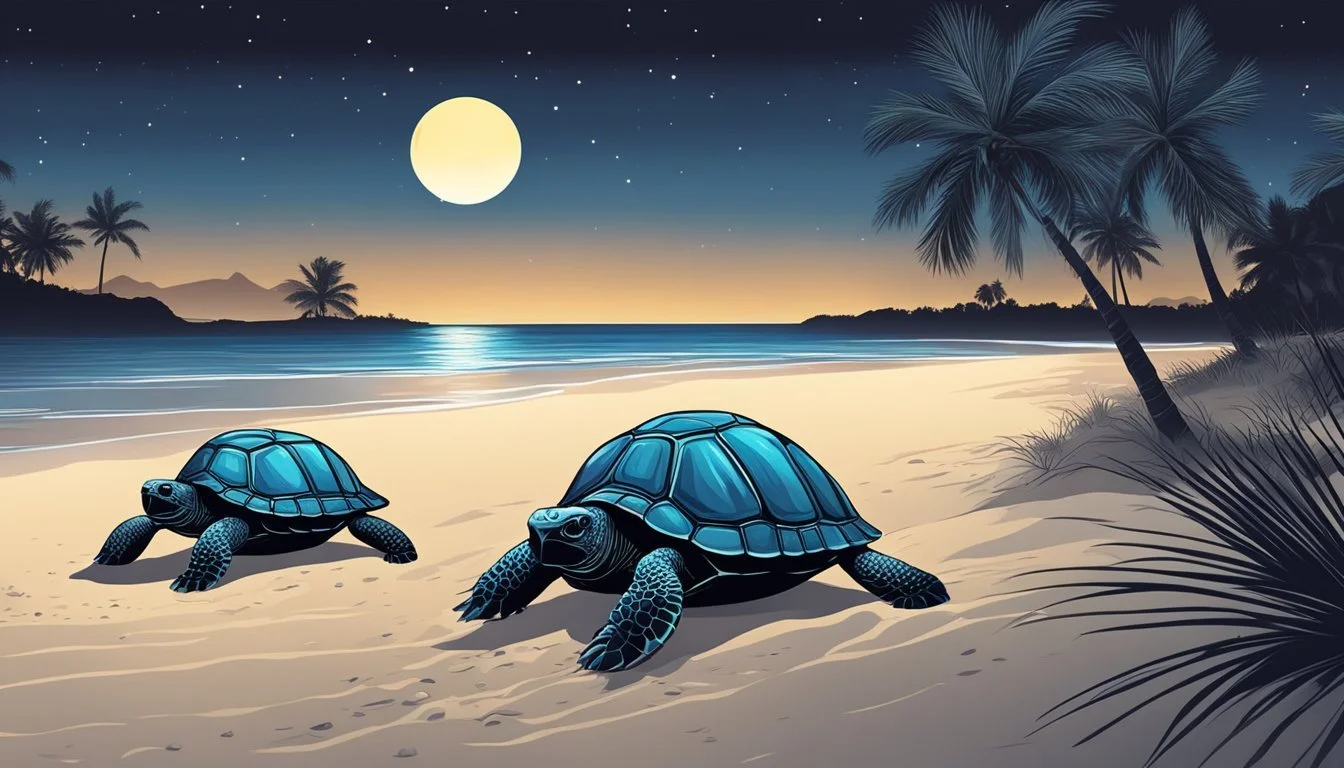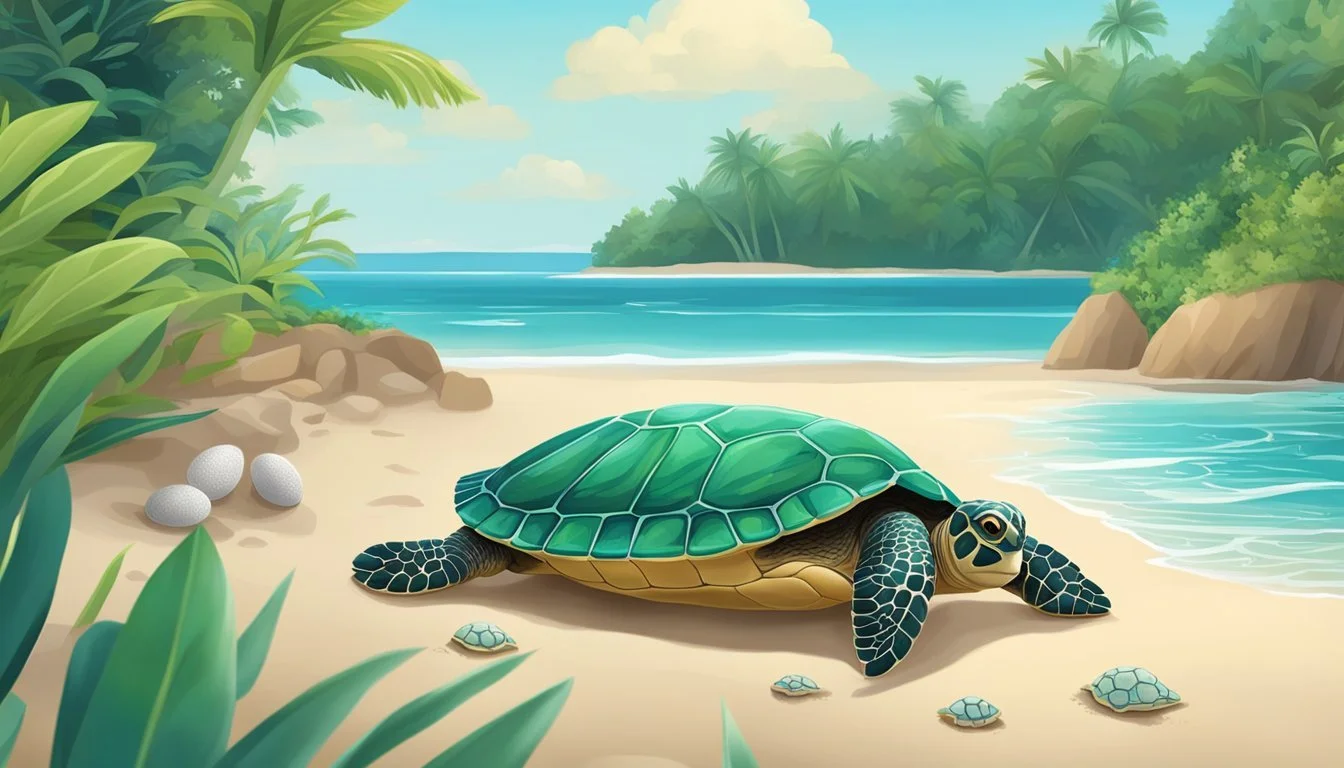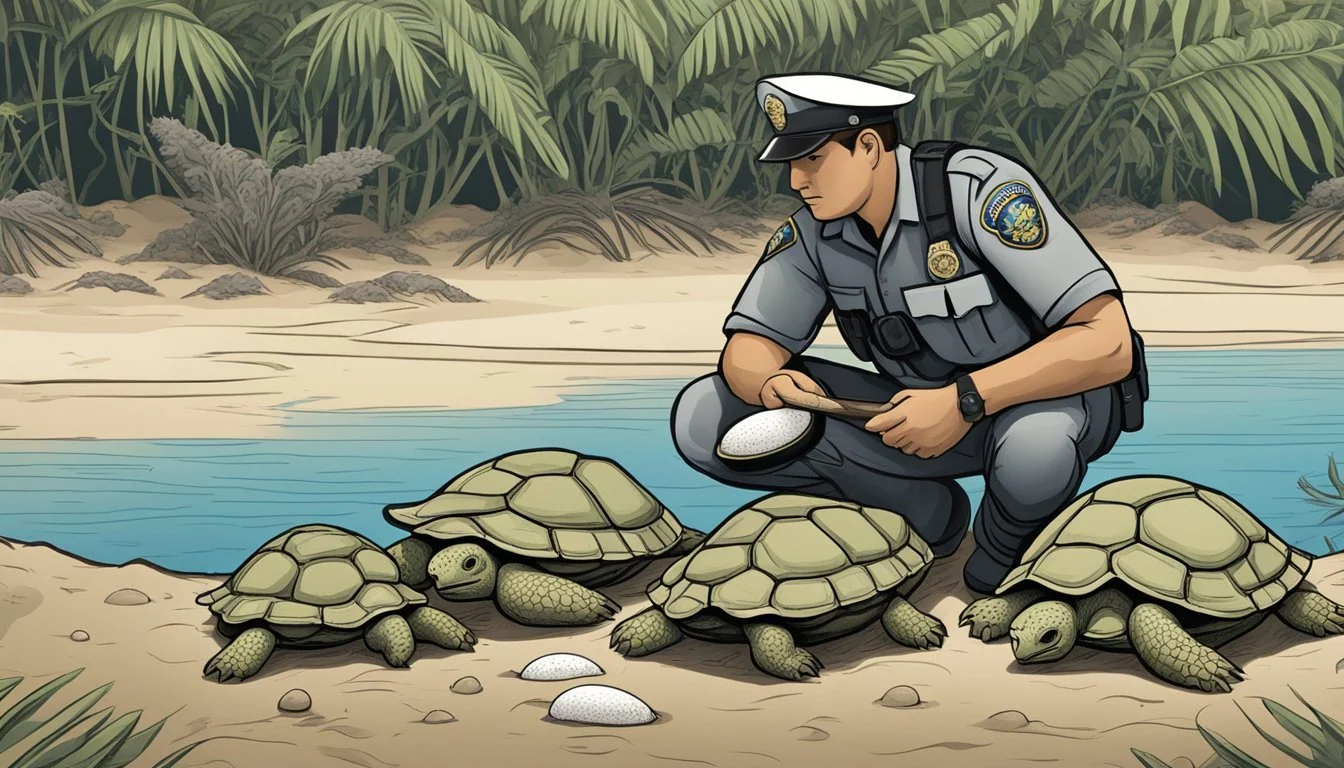Turtle Eggs
Unpacking the Delicacy Debate in Central America
In the warm coastal areas of Central America, a troubling trend poses a significant threat to marine conservation efforts. Turtle eggs, revered as a delicacy in this region, are frequently taken from nests, contributing to the decline of already-threatened sea turtle species. Cultural practices and longstanding beliefs fuel the demand for these eggs, which some locals consume and sell under the misguided belief that they offer aphrodisiac properties or other health benefits.
The repercussions of this illicit trade are profound, impacting all seven sea turtle species which are considered endangered or critically endangered. The illegal harvesting adds to the myriad of challenges these species face, including habitat loss, pollution, and climate change. Moreover, the removal of eggs from their natural habitat hampers the already slim chances of hatchling survival, as sea turtles have a notoriously low survival rate from egg to adulthood.
In response to this crisis, conservationists and scientists have been innovating to protect these marine creatures. Techniques such as the creation of decoy GPS tracker eggs, known as InvestEggators, provide a modern approach to tracking the illegal trade routes and identifying poaching hotspots. These interventions are instrumental in understanding and combating the black market for turtle eggs, and they represent a beacon of hope for the future of sea turtle conservation.
The Significance of Sea Turtles
Sea turtles are essential to both the ecological balance of marine environments and the cultural fabric of many coastal communities. Their presence serves as an indicator of the health of the world's oceans.
Ecological Impact of Sea Turtles
Sea turtles play critical roles in maintaining marine biodiversity. Their grazing habits help control the growth of seagrasses and algae, which benefits the health of coral reefs and the broader oceanic ecosystem. As they transport nutrients between the marine and beach ecosystems, sea turtles contribute to coastal dune stabilization. The largest sea turtles, the leatherbacks, dive to impressive depths to consume jellyfish, aiding in the balance of marine life and preventing overpopulation of these gelatinous zooplankton.
Cultural and Economic Importance
Cultural Significance: In many Central American cultures, sea turtles are symbolic creatures woven into the historical and spiritual tapestry of societies. They are venerated in local lore and often represent longevity and endurance.
Economic Value: The economic opportunities provided by sea turtles are significant for local economies, particularly through eco-tourism. Observing these creatures during nesting and hatching seasons attracts tourists, generating income for regional businesses. However, this positive economic aspect is counterbalanced by the illegal trade of sea turtle eggs, which are considered a delicacy and have unfortunately created an illicit source of revenue. This illegal trade poses a substantial threat to sea turtle conservation.
Turtle Eggs as a Delicacy
Turtle eggs, considered a delicacy in various regions of Central America, are facing a conservation crisis due to their popularity on the black market.
Consumption Practices in Central America
In certain Central American localities, turtle eggs are harvested and sold in markets as a sought-after delicacy. Typically, they are consumed in various ways - raw with salt and lime or boiled for a special treat. The demand for these eggs exemplifies a significant cultural preference, with thousands of eggs being taken from nests along coastal areas.
Impact on Turtle Populations
The collection of turtle eggs for consumption has a direct negative impact on sea turtle populations. These reptiles are already endangered and removing eggs from the wild exacerbates the problem. As keystone species, turtles play an essential role in marine ecosystems, and their decline can lead to negative ecological consequences. Conservationists are concerned that without intervention, the overexploitation of turtle eggs may lead to further reductions in sea turtle numbers.
Conservation Challenges
Conservation efforts for sea turtles face significant obstacles, particularly from poaching and illegal trade, as well as from destruction of their habitats and nesting sites.
Poaching and Illegal Trade
Sea turtle eggs are highly sought after in Central America, often seen as a delicacy, which has given rise to a lucrative illegal trade. Despite legal protection measures, poaching persists due to high demand and significant profit margins. Conservationist Kim Williams-Guillén conceived an innovation to combat this issue by introducing GPS-enabled fake eggs into turtle nests to track poachers—a strategy that illustrates the creative approaches being employed to address wildlife poaching. Unfortunately, the illegal dug-up of these nests for eggs already exacerbates the risk of species decline, especially as these actions often go undetected.
Threats to Habitats and Nesting Sites
The degradation of turtle nests and habitats poses another threat to conservation efforts. Development along coastlines can lead to the destruction of critical nesting sites, whilst climate change impacts such as rising sea levels and increased storm frequency can further alter or erode these environments. Efforts to protect nesting sites in places like Tapiche and the notable success in Tortuguero, Costa Rica, have been challenged by habitat threats both locally and across the region. The rise in popularity of sea turtle nesting sites among tourists adds additional strain, necessitating improved awareness and careful management to ensure turtles' chances of survival.
Technological Advancements in Conservation
The trade of endangered sea turtle eggs is being combated using cutting-edge technologies that include GPS-enabled decoy eggs and genetic research. These innovations allow conservationists to track illegal activities and understand population genetics for better conservation strategies.
Innovative Tracking Solutions
Conservationists are employing GPS-enabled decoy eggs, known as InvestEggators, to tackle the illegal trafficking of sea turtle eggs in Central America. These fake eggs are strategically placed within turtle nests on the beach. When poachers take the eggs, the decoys' GPS trackers activate, providing real-time data on the eggs' journeys and uncovering illegal trade routes. This technology has proven successful in not impacting the incubation of real eggs while enabling enforcement agencies to trace and apprehend wildlife criminals. The concept behind this technology won the Wildlife Crime Tech Challenge in 2015, affirming its potential in aiding wildlife conservation.
DNA and Genetic Research
DNA Analysis: Conservationists extract DNA from seized turtle eggs to identify their species and origin. This information is critical in determining the poaching hotspots and directing conservation efforts where they are most needed.
Genetic Research: Scientists are studying the genetic makeup of different sea turtle populations. Understanding the genetics aids in the proper management of protected areas and ensuring the health and diversity of turtle species.
By employing these technologies, conservationists are gaining more precise information on poaching activities and turtle population dynamics, enabling more effective protection and management of these endangered species.
On-The-Ground Conservation Efforts
Effective conservation of turtle eggs in Central America relies on a combination of local and global initiatives, and the active involvement of communities through educational programs. These efforts aim to balance the traditional consumption of turtle eggs with the need for species preservation.
Local and Global Initiatives
Organizations like Paso Pacifico engage in a multi-pronged conservation approach, which involves collaboration between international entities like the University of Kent and local stakeholders. They focus on establishing protected areas and enforcing laws that guard against the illegal poaching of turtle eggs. Techniques like:
Nest monitoring and relocation: Ensuring eggs are laid in safe, protected environments.
Patrolling beaches: Local community members often partake in nightly watches to prevent poaching.
are instrumental for the survival of turtle populations.
Education and Community Involvement
Education plays a pivotal role in altering the local community's perception of turtle egg consumption. Programs directed by conservation groups disseminate knowledge on:
The ecological importance of turtles
The impact of egg harvesting on turtle populations
By empowering the local community through education, individuals understand the long-term benefits of conservation. Community-based incentives often:
Encourage locals to engage in conservation as active participants
Provide alternative livelihoods to reduce dependence on egg collection
These initiatives ensure that conservation efforts are sustainable and locally driven, providing a path for both cultural practices and turtle populations to thrive.
Law Enforcement and Policy
In Central America, the illicit trade of turtle eggs poses a significant challenge to conservation efforts, necessitating robust law enforcement strategies and policy frameworks.
National and International Regulations
Central America, particularly Costa Rica, has enacted legislation aimed at protecting sea turtles and their eggs. These laws are buttressed by international treaties such as the Convention on International Trade in Endangered Species of Wild Fauna and Flora (CITES), which strives to prevent species extinction due to international trade. Despite these regulations, enforcement proves difficult, especially in areas where turtle eggs are considered delicacies.
Costa Rican Legislation: In Costa Rica, the collection and sale of sea turtle eggs are illegal, with exceptions in certain areas where regulated collection is allowed for traditional purposes.
CITES: As signatories, Central American countries are bound to adhere to regulations that limit and control the trade of endangered species, including sea turtles.
Enforcement Successes and Challenges
Enforcement successes are often the result of multi-stakeholder efforts involving non-governmental organizations, local communities, and law enforcement agencies. These groups sometimes deploy innovative technologies, such as GPS-enabled decoy eggs, to track and apprehend traffickers in what are known as "InvestEggator" operations.
Challenges in enforcement are pervasive. Limited resources, corruption, and the high demand for turtle eggs in local markets complicate the task. Additionally, the involvement of organized criminal groups in the trafficking of turtle eggs amplifies these challenges, requiring a more sophisticated approach from law enforcement agencies.
Technology in Enforcement: The use of GPS tracking devices inside decoy eggs has allowed for the monitoring of illegal trade routes, aiding in the apprehension of poachers.
Challenges Faced by Law Enforcement:
Resource constraints limit the capacity for patrol and surveillance.
Corruption can undermine enforcement efforts.
Black market demand continues to drive the illegal trade.
By leveraging international support and advancements in conservation technology, Central American nations aim to strengthen law enforcement and curb the unlawful trafficking of turtle eggs.
The Future of Turtle Conservation
The future of turtle conservation hinges on the integration of innovative trends and the establishment of sustainable practices. These approaches aim to balance human interests with the needs of these endangered species.
Emerging Trends in Conservation
Conservation organizations are increasingly leveraging technology to protect sea turtle populations. A novel initiative involves using decoy GPS-equipped eggs, which can be placed in nests to track illegal trade routes when poachers take them. A conservation scientist's idea borne from the need to thwart egg poaching has led to the development of these fake turtle eggs, which once stolen, provide data to track the culprits and understand trafficking patterns.
Such advancements complement traditional conservation efforts and provide a data-driven foundation to deter wildlife crime. Additionally, there is potential for the application of satellite-derived imagery and photo-identification algorithms aided by machine learning, aiming for real-time, global assessments of turtle populations. These technological tools represent a forward-thinking facet of turtle conservation efforts.
Creating Sustainable Practices
Sustainable practices in turtle conservation focus on aligning the interests of wildlife protection with those of local communities. Efforts include:
Demand Reduction Campaigns: Educating the public on the ramifications of consuming illegal turtle eggs and promoting alternatives to reduce demand.
Community Engagement: Involving local communities in monitoring and safeguarding turtle nesting sites can provide economic benefits and foster a conservation mindset.
Sustainable practices pivot on not only enforcing conservation laws but also on generating economic incentives that benefit both human communities and turtle populations. Consistent growth in sea turtle numbers can lead to ecosystem restoration and provide natural services such as dune stabilization, which further emphasizes the importance of comprehensive, sustainable conservation strategies.

